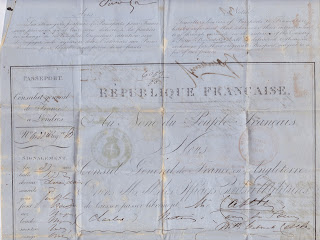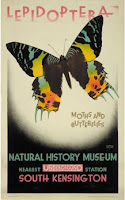If you’re thinking of making any
New Year resolutions, it might be a good time for me to share this illustration -
The Reformation - from 215 years ago.
It comes from a story called The History
of Miss Mancel from the June 1807 issue of the monthly children’s
periodical, The Youth’s Magazine.
"She took an opportunity when they were alone of throwing herself upon
her knees at their feet and with a voice interrupted by sobs imploring their
pardon for the uneasiness she had given them."
The magazine was founded in 1805,
by my 3x great grandfather William Brodie Gurney, a man committed to education
as a means of self-improvement. Education, WBG believed, improved one’s usefulness to God and
society. When he perceived a lack of moral reading matter for the children attending
his pioneering network of non-conformist Sunday schools, he came up with
the idea of a regular publication of improving tales of fact and fiction. And
when the Sunday School Union, the organisation he co-founded in 1803, was
hesitant about the cost, Gurney and his friend William Lloyd funded its
production themselves.
Although the Religious Tract
Society formed in 1799 had already begun to produce material aimed at children,
The Youth’s Magazine was the first regular
publication of its kind. As the emphasis on literacy as a path to spiritual
enlightenment took hold, the magazine spawned over 40 imitators in the first
half of the nineteenth century. Those were followed by more secular “comics,” such
as Chums, The Eagle and The Beano, which in turn inspired the counter-culture
magazines of the late twentieth century from Mad to Viz.
We’ve come a long way from The Reformation! Siobhan
Lam has posted (on the Victorian Web site) a synopsis of the story whose
key moment the picture captures. Eliza Mancel, the only daughter of fond
wealthy parents, is “endowed by Heaven with a very beautiful person, a
fine capacity, and a very retentive memory.” But she is also a spoiled brat with a bad temper.
After alienating all her friends and family, Eliza at last becomes ashamed of
her behaviour and asks her parents for “advice and directions.”
This is her moment of reformation,
and her “humble and ingenuous confession rekindled all the latent sparks of
love in the bosoms of her parents.” While her mother is incapacitated by her
feelings, Mr. Mancel teaches Eliza to look to God. From then on, Eliza Mancel
is utterly good and pious, all her friends and family love and admire her, and she
grows old and dies happy. The narrator then reminds his audience to check their tempers and beware of gaining evil habits that may be hard to
reform later. To help the reader on his or her young way, the piece ends with Luke
18:13 – “God be merciful to me a sinner.” (The story is signed "E.T.")
William Brodie Gurney (1777-1855)
editor and parent
William Gurney was a joint editor
of the magazine for the first ten years of its existence, and remained its
treasurer for thirty years. He continued to contribute occasional pieces and involve
himself in its production until his death. His first son was born the year
before he founded The Youth Magazine,
and his first daughter the year before he published The History of Miss Mancel
as a warning to children and their parents.
The Youth''s Magazine, 1832



















































